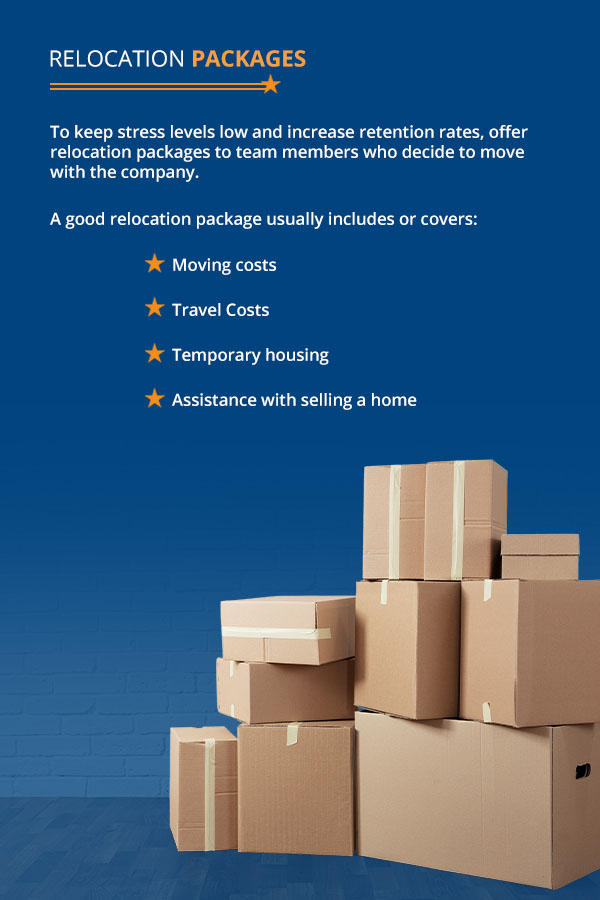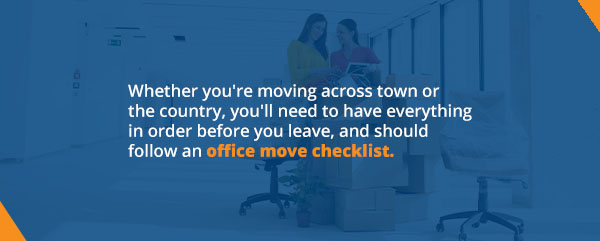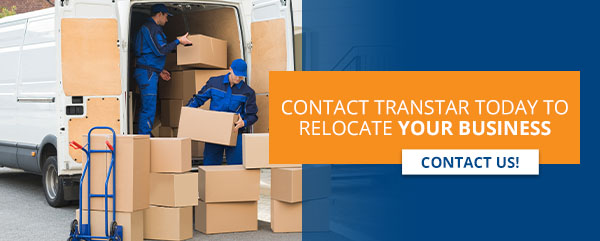
The business relocation process takes time and planning to execute properly. You’ll have to coordinate with an office moving service and discuss these changes with your employees. You also have to start preparing a budget to know how much money to put away for the move. At Transtar Moving Systems, we understand how stressful a move can be. Everything has to be done just right to get the best results.
To facilitate the moving process, we have created some tips, tricks and office moving checklists to help your move run as smoothly as possible!
When you decide to move your company, you’ll need to break the news to your staff. There are many ways to do this, such as issuing a company relocation letter to employees or having a meeting to get into the details about the move and any types of relocation packages you plan to offer. Ideally, you’ll want to provide multiple methods for employees to hear the news so that they are adequately informed.
This information should go out months in advance so employees are given plenty of notice and have as much time as they need to prepare. In the written statement or in-person meeting, explain why the move is happening and offer support to your workers. Staff members may experience stress or anxiety as they’ll worry about their job security, so be open to answering any questions and listening to their concerns.
Offer continuous communication about the move to employees, even if there isn’t much new information to share. This will help your staff feel more secure about the move, especially if they decide to relocate with you.
Be flexible with your employees and know that this move is a significant life change for them as much as it is for you. They may need paid time off to pack their belongings and move or additional resources to help them find another job once your company has moved.

Retaining employees rather than replacing them is ideal for businesses moving long distances, as replacing a worker can be an expensive ordeal. However, not all employees will be able to make the move, especially if it spans a considerable distance. Moving a long way from home can separate employees from family, friends and their established life.
While 62% of workers would consider relocating with their company, there needs to be some incentives to encourage staff to take the leap and move to a new location. You can do a few things as a company to sweeten the deal and retain as many staff members as possible.
One of the most significant incentives you can offer is increasing the wages or salaries of employees who relocate and offering them new perks through common relocation packages. One study found that 44% of employees use pay and perks as the number one factor to decide whether they’ll follow a company during their move. If you want to keep your current employees, consider raising the pay for workers who are willing to follow you.
Perks include things such as comprehensive health insurance, paid time off or career development opportunities. Employees want to know they’ll be taken care of and that moving to another city will be worthwhile. Offering amenities and other incentives can also be one of your perks. These things can range from offering gym memberships to free parking. A comfortable space where employees can wind down during their breaks and enjoy a meal or coffee is also an excellent amenity to consider.

Moving is understandably stressful, both for businesses and their employees. To keep stress levels low and increase retention rates, offer relocation packages to team members who decide to move with the company. A good relocation package usually includes or covers:
What you include in your relocation package will vary based on what you and your employees need. What you’re able to cover will determine the number of employees who can travel with you. It is a good idea to invest well in your current workers because replacing team members can cost over half of your current employees’ salaries or wages due to training and recruitment. That extends to the top by offering relocation packages for executives who are essential to your business. Finding a solid middle ground that benefits your business and staff is the best method for employee retention.
While some of your workers may not be able to relocate with your business, they may still be able to work for you. Working from home is becoming more popular than ever, with a predicted 87% increase in the number of Americans working remotely by 2025.
Look at the positions you currently offer within your business. How many of these jobs could be done from home? Are your employees willing to make the transition?
Understandably, you may have some reservations about moving some of your employees to a remote lifestyle. However, working from home benefits employers and employees alike. In fact, studies show that productivity increases by up to 13% when working from home.
While it may be a big change, consider remote work as a viable option if many of your employees cannot move to a new location with you.
You’re making the next big step for your business or company by relocating. To get the best results, here are some general tips to follow:
There will be some costs to consider when your company relocates offices, such as:
The best method to tackle budget planning is to assign a project manager who will oversee everything. Have them develop a plan so you can see what costs are involved.

Whether you’re moving across town or the country, you’ll need to have everything in order before you leave. You should follow an office move checklist from the beginning to the end of the moving process to garner the best results.
If you’re not moving far, you’ll have less to do than it’d take to move a long distance, but following a checklist will help you keep track of everything and move efficiently. Here are some actionable items that should be included on your checklist:
A long-distance move can be more complicated than a local one, but moving day will come and go with ease if you’re prepared. Using a checklist will help you get ready for the big day.
Some tasks will overlap with the local moving checklist, such as creating a to-do list. You’ll still want to have a detailed budget, hire a moving company and update all your website and social media information. Check the list above and determine what applies to your situation, and follow the checklist below for additional ideas:
For more tips and tricks to facilitate the optimal move, check out additional commercial and office relocation advice on our site!

If you’re moving your business to a new office in South Jersey, Transtar Moving Systems is the commercial moving company for you. We serve South Jersey and the greater Philadelphia regions. We assist you from the very beginning of your move, starting with developing a moving plan, and serve you until the end.
We’ll create the schedule, take inventory, handle labeling and help you unpack everything once we’ve arrived at the new destination. With Transtar Moving Systems, you’re in good hands. If you’re ready to start planning your move, contact our team for commercial moving services and get a free quote!